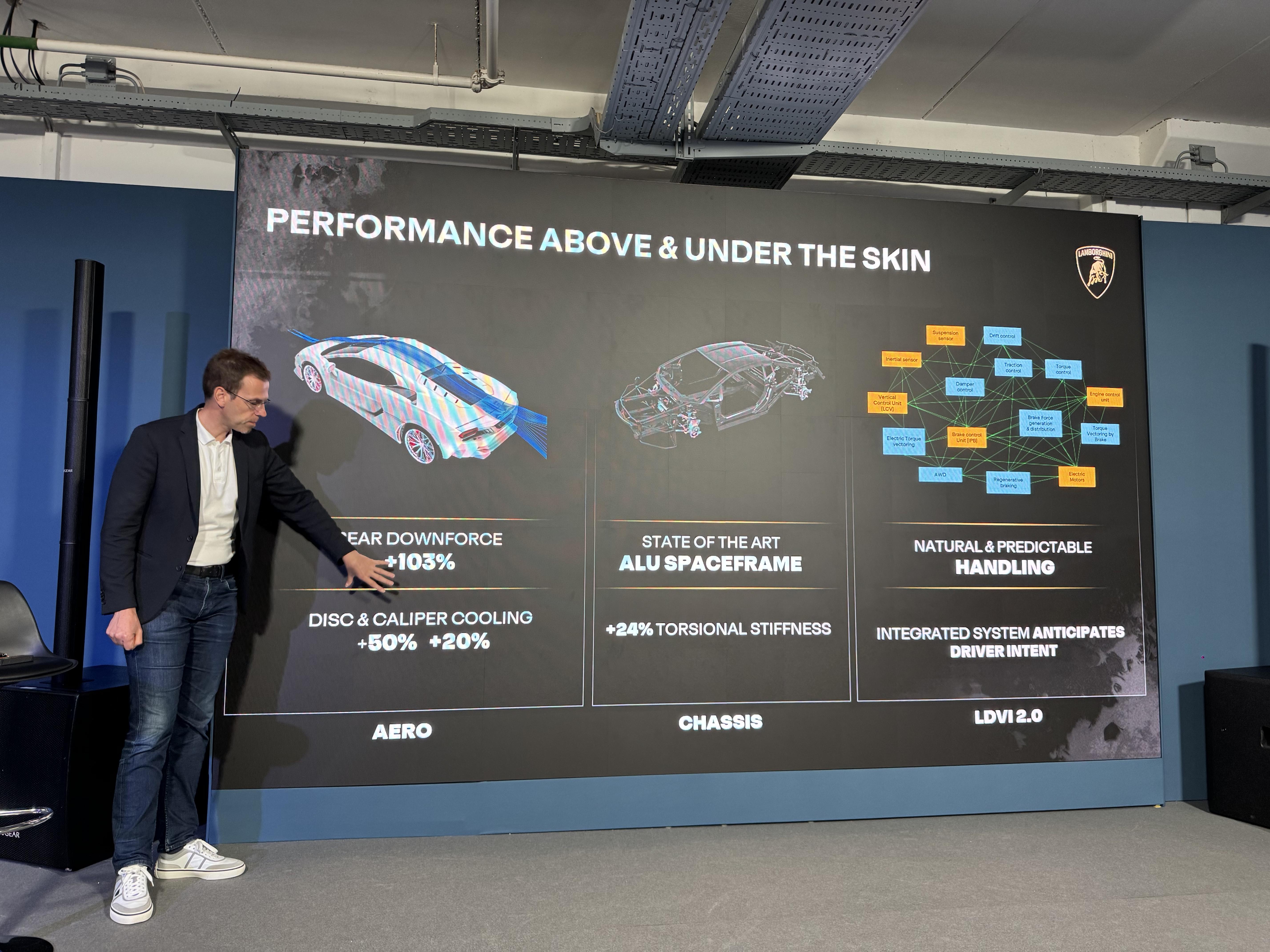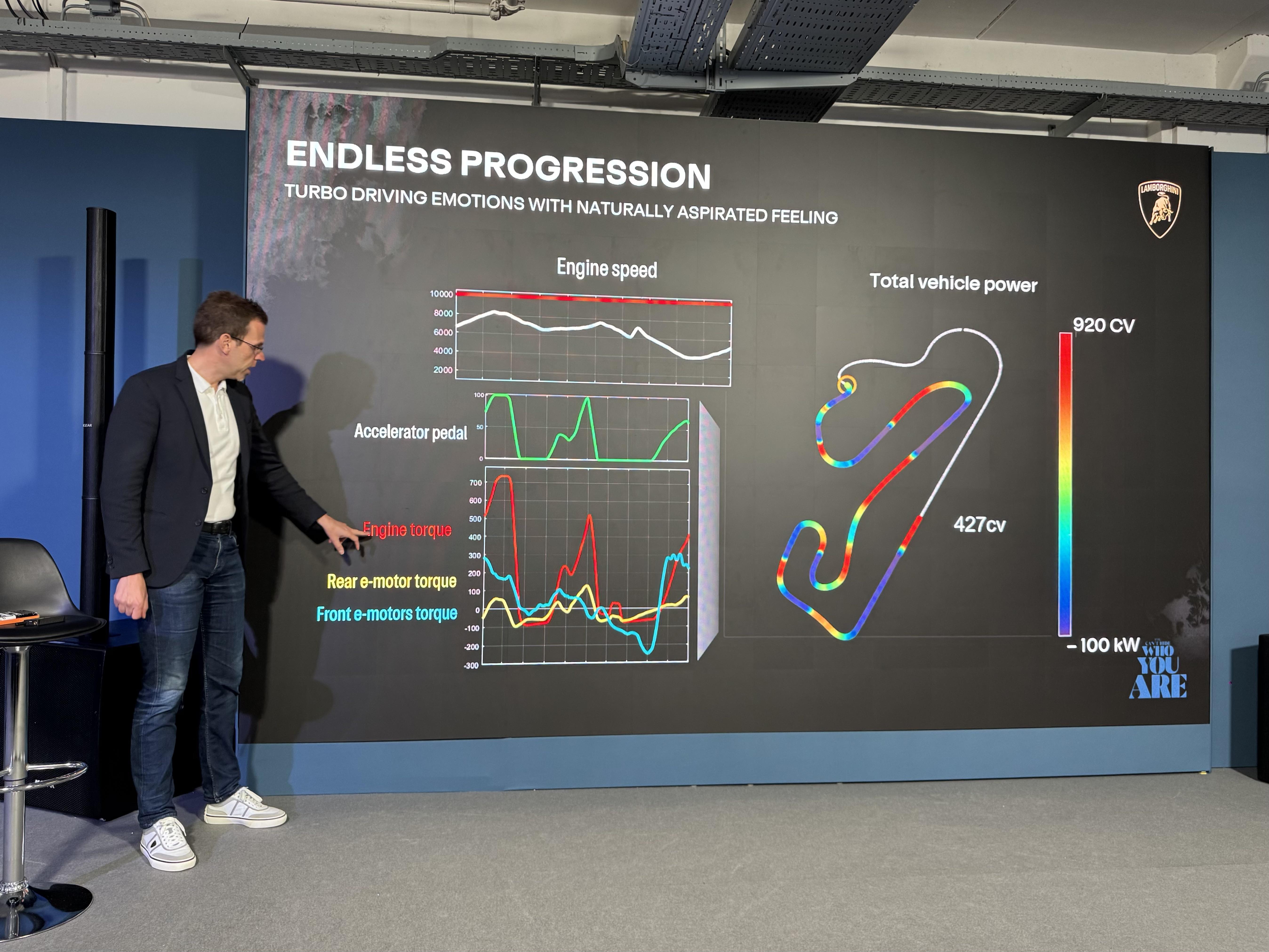The Lamborghini Temerario may grab headlines with its 10,000rpm twin-turbo V8 and aggressive aero, but according to the brand’s chief technical officer, Dr. Ing. Rouven Mohr, its most transformative feature isn’t hardware at all – it’s software.
“The drivability of this car is 90% the result of this thing,” Dr Mohr said, pointing to a graphic of the vehicle’s control software.
“The hardware influence is not negligible, I would not say. But this is the priority. Because the people always think, but how much torque do you have on the front e-motor… this difference, you will not perceive it.
“But you perceive if the function that is using this electric motor [is] in the wrong way. If this is not done in [a] proper way, this you can see immediately.”
CarExpert can save you thousands on a new car. Click here to get a great deal.
At the centre of the Temerario’s dynamic personality is Lamborghini’s “electronic brain,” a proprietary control logic that Dr Mohr says was built entirely in-house – not just tuned from supplier software.
“We call it always ‘our why,’ and we are quite proud of [it], because we are doing this in-house,” he said. “I can tell you without naming names, maximum of three to four manufacturers that I know are doing it really [in-house]. What the majority is doing… they use the libraries of the suppliers – Bosch, Continental, or whatever – take the functions and make a parameterisation of the function. But this is not in-house.”
The system, developed over several years with a dedicated team of control engineers, determines where to deploy torque – whether through the front motors, rear electric motor, or internal combustion engine – at every point of a drive. And the logic goes far beyond conventional power delivery.
“You are coming [in a] straight line, full throttle… you have the maximum system power load. If you then lift in the coasting phase… we break with the rear electric motor,” Dr Mohr said.
“Why to do so? First of all, it’s recuperating. But this is not the main reason. The main reason is we put in this sense, additional inertia in the drivetrain, and this is stabilising the car.”
That stabilisation, according to Dr Mohr, makes the car more predictable just before braking zones. The software then blends brake regeneration through the front motors to maximise deceleration and energy recovery, before shifting to torque vectoring on corner entry and exit.
“Hopefully you recognise nothing of this,” he said. “Because for the driver, if it’s done well, it’s not perceivable where it’s [happening]… but this torque management is fundamental to have this linearity.”
Dr Mohr said that while the Revuelto prioritises a more neutral chassis balance by preferring torque delivery from the front axle, the Temerario takes a different approach.
“The Temerario, instead, is more a two-wheel-drive bias car,” he explained. “So always, the first priority is the rear axle. We put always, if possible, the torque in the rear, except for sure, when the traction is not there at all.”
A key enabler of this is the front e-axle and the bespoke torque vectoring logic Lamborghini has developed for it.
“You can imagine, if you have the car [and] you apply a different torque from left to the right, different force, the car starts to rotate, or you stop the rotation. And this you can do in acceleration and also if you are off throttle… this function – negative torque vectoring – is not of the standard libraries of the suppliers. This is developed by our people.”
Dr Mohr says his team tried to avoid brake-based vectoring entirely, since it often felt as an intrusive intervention.
“Every brake intervention can be perceived as intervention, and this feels not natural. Then you end up [with] the feeling of ‘sh*t, I did something wrong’,” he said.
The system’s performance is quantifiable. Lamborghini measured a 30 per cent increase in rotation speed mid-corner compared to the Huracán, despite the Temerario being physically larger and heavier.
“The car is super agile on the rotation and very playful.. this behaviour is super surprising,” Dr Mohr said. “Because it’s not so expectable… if you read only the numbers.”
In more extreme use cases like drift mode, the system adapts again, helping to initiate, maintain and exit slides without abrupt interventions.
“Usually a drift mode is doing the following: they take the limits of the stability control, they extend the limits… and then within this boundary condition the car is free,” Dr Mohr said. “The problem is… if you are over the limit, you have to make an intervention, [a] brake intervention, like in the stability case… and sometimes it’s really, like you drive in to a virtual wall.”
Instead, Lamborghini’s system gently guides the car into and out of the drift using torque vectoring and yaw management.
“Our philosophy is to anticipate the reaction of the car and to try to guide the car in the target position… not only good show-off drift, you have also less money to pay for repairing your car,” Dr Mohr joked.
The system is developed using the same algorithms across simulation, hardware-in-the-loop testing, and on-track validation.
“If you start only with a car to make the application job, you can do only the using standard libraries and making calibration… because you have not the time at all to manage the logic,” Dr Mohr said.
As Lamborghini enters the software-defined era of vehicle dynamics, Dr Mohr believes in-house control of these systems will define the brand’s next generation. “This is the game changer,” he said. “And this is why we are doing it ourselves.”
It also leads itself naturally into future models that will be entirely electric, where software will be the key differentiator for performance.






